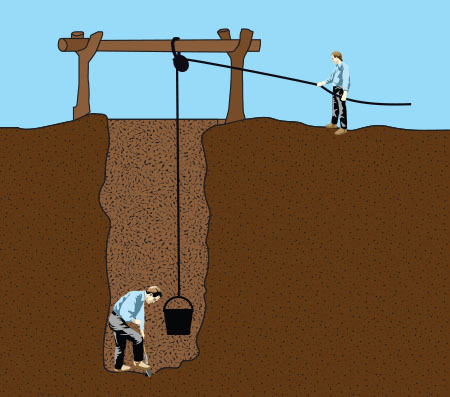Getting Water

Hand Digging a Well
Establishing a reliable source of water was a top priority for any homesteader. Land that was near a creek or lake was highly desirable because of the ease of access. When this wasn’t possible, a well had to be dug by hand.
The person digging the well would need to dig a hole large enough to stand and move around in--about 5 or 6 feet in diameter. Since digging a hole 5 feet in diameter by hand required a lot of effort, locating a spot where water was likely was important. To aid in the location of water, a folk art technique called water dowsing was used.
The dowser would use a Y shaped branch from a hazel or willow tree called a dowsing rod and walk the property with the bottom of the Y pointing away from him. When the rod would dip or point down this would indicate water and the location of the well.
Beyond the sheer hard work of digging a well, it was also quite dangerous. Hitting a pocket of swamp gas or methane could displace the oxygen in the hole. And, as the well got deeper, there was an increasing danger of the walls caving in, burying the digger. To prevent cave-ins, lumber was often used to shore up the sides of the hole as it was being dug.
Most wells were 30 to 60 feet deep, but some were as deep as 90 feet. Once successfully dug, the walls were lined with stones and a way was fashioned to haul water up with buckets.
Having a well did not mean one had running water. Going to the well and getting buckets of water was a daily chore on the farm.
The well at the Hutmacher site is spring-fed but it is about 500 feet from the house, east of the farm site, near the original home of Frank’s father, Valentine Hutmacher.
Getting Water

